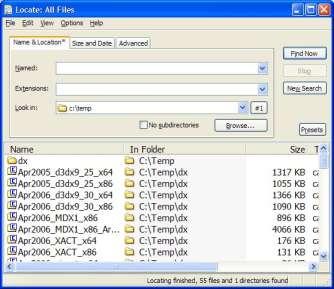
#WINDOWS FIND FILE TYPE MAC OS#
Mac OS sometimes differs from Windows, where instead of “Save As” you will want to look for the “Format” drop down menu and select the file extension type from there. You can do this by opening the RAW photo in a photo editor and changing the file extension in the “Save As” or “Export As” menu. Let’s say you have a RAW photo that takes up too much space on your website or computer and you want to change or convert it into something smaller like a JPG or PNG file. Check this box to make the file extension visible. Then go to the Advanced tab where you should find a checkbox labeled “Show all filename extensions”. Check the box next to “file name extensions” to see file extensions in the filename.įor Mac OS, go to Finder and click on Preferences. There should be a section labeled “Show/Hide” with a couple options.
#WINDOWS FIND FILE TYPE WINDOWS#
Either way, it’s easy to show or hide file extensions if you know where to go in your settings.įor Windows 10, open File Explorer and go to the View tab. If you are wanting to change the file extension type, you’ll want the file extension visible. However, many users want or need to see the file extension to avoid compatibility problems.

For some users, this may seem like a cleaner look that is easier to understand. Some settings automatically hide the file extension from the filename. The second place you can find a file’s extension on your computer is the “Properties” menu on a Microsoft computer or the “Get Info” menu on a computer running the Mac OS. The “.doc,” “.pdf,” and “.txt” are the three different file formats that your “My Test File” document has been saved in. Those three files might look something like this: Let’s say you have a file saved on your computer called “My Text File.” Let’s also say that you saved it in three different file formats on your computer. That dot should be followed by some shortened acronym of some sort. Whether you’re looking at a file on your computer or you’re looking at a file on the internet, generally you’ll see the file name followed by a dot. You can generally find file extensions in one of two places. This isn’t important if you don’t need to use a specific file format, but if the company you work for only uses a certain file extension type for quality or efficiency-related reasons, you’ll have to be familiar with the concept of extensions.įree eBook: Stop Letting Document Work Slow You Down Where Do I Find File Extensions Some videos require a specific video player to watch them.
#WINDOWS FIND FILE TYPE DRIVERS#
For example, certain types of RAW photos require that your computer have certain drivers on them. They also require something different from your computer or browser. Different types of videos include AVI, WMV, and MP4.Įach file extension varies in quality and size. There are different types of text documents like DOC, HTML, TXT, and PDF. There are different types of images like JPEG, GIF, PNG, and RAW. Images, videos, spreadsheets, word documents, and anything else you interact with are different ways of showing data.Īlthough we can put different types of data into these general groups, it’s more useful to talk about them as specific file extensions.ĭifferent groups of data have different ways to represent the data they’re conveying. This data can be roughly grouped together by how it’s presented.

Both your computer and the internet are nothing more than collections of data held within an electronic filing system.

Whether you’re talking about your computer or the internet, what you’re really talking about is data.


 0 kommentar(er)
0 kommentar(er)
